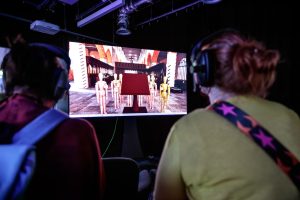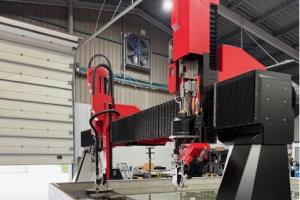Business School experts put creativity to the test

BUSINESSES who let their designers take the reins when developing new products could see sales rise by 20%, a leading business academic told an audience in Birmingham.
Professor Stephen Roper of Warwick Business School said his studies had revealed that whereas some businesses only called in designers for specific stages of a project, those that let them lead the process saw a considerable upturn in product sales as a result.
Prof Roper, professor of enterprise, was talking at the latest in a series of business briefing events for senior executives as part of the business school’s strategy to increase its engagement with the Birmingham business community.
He was joined by Prof Jonothan Neelands, professor of creative education at WBS, for the briefing on ‘commercialising creativity: from nonsense to sense, from sense to value.’
The pair used the event to urge businesses to harness the creative powers of their staff, and to bust the myth that creativity only belongs in the arts.
Prof Neelands said: “We’re using the phrase ‘nonsense to sense’ to describe the familiar process of the generation of ideas through to the introduction of a new product into the market.”
There were many overlaps between creativity in business and creativity ion the arts, he said: “We talk to theatre directors and they often describe a process where they move from the often playful generation of ideas to followed by a stage of ruthless pruning back to the essentials.”
That, he said, was the process of moving from ‘sense to value’, and was the vital stage in industry to ensure products had a market and could be produced and sold profitably.
Prof Roper told his audience that he had wanted to find ways to measure the impact of creativity in the workplace, so designed a survey that looked at the extent to which designers – often the most creative people in a team – were involved in product development in various firms. He then measured how much growth these companies saw in the proportion of their sales that came from these new ‘innovative’ products.
He said when design members were used only as functional specialists or as members of multifunctional teams, product success rose by less than 10%, compared to firms that had no design input into the project. But those companies that put their designers in charge of the whole product development process saw their sales enhanced by more than 20%.
He said: “Having design skills in a business is clearly important to create good products and services, but it’s equally important to use those designers well. You’ve got to manage creativity to get the most out of it.
“We found that most manufacturing companies involve their designers in the prototype or product design phase – and very rarely use them in other crucial phases such as market research.
“Interestingly, we found this pattern has barely changed in the past 20 years.”
Prof Neelands put the concept of creativity in its historical context, and addressed some common misconceptions.
He said: “There is a bit of a myth that creativity comes from the arts and that only artists are truly creative whole those who work in commerce are somehow less creative. But our modern idea of creativity actually owes less to the arts and more to the creativity of the entrepreneurs of the the late 18th and early 19th century and the spirit of laissez faire economics.
“This was of course a period of huge technological, mercantile and industrial revolution. Scientific and technical advances made independence from nature and God possible, free market economics made constant innovation necessary, and the ultimate value of progress made innovation desirable.”









